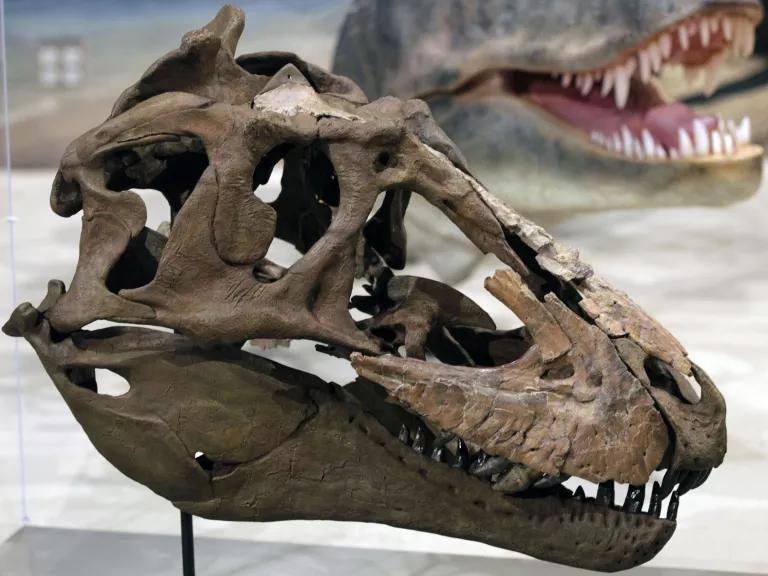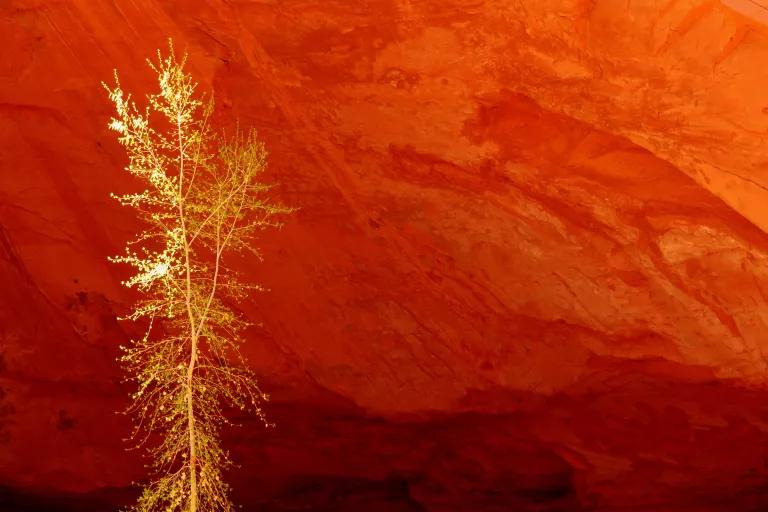In Utah, Industry Pounces on What Were, Not Long Ago, Our Public Lands
Cobalt mining and other interests lay claim to Grand Staircase–Escalante and Bears Ears National Monuments, rankling local communities tied to these lands.

Grand Staircase-Escalante National Monument, Utah
The nearly two million–acre Grand Staircase–Escalante National Monument in southern Utah is one of those places that make you feel very, very small. The pink, white, vermilion, and chocolate cliffs stretch as far as the eye can see, tower thousands of feet high, and represent 275 million years of the earth’s history.
Tourists travel to this remote area to take in landscapes unlike any others in the world. It’s both a haven for wildlife (“85 percent of the biodiversity of the state of Utah can be found here,” says Nicole Croft, executive director of the Grand Staircase Escalante Partners) and for culture, with more than 100,000 archaeological sites attesting to a long history of Native American habitation. The monument is also a unique area for science, home to the remains of more than 20 types of previously undiscovered dinosaurs, the most recent announced in July 2018.

Yet not long after President Trump declared that he was roughly halving the size of the Grand Staircase–Escalante National Monument last December, a Canadian mining company began staking mining claims there. Trump claimed to be returning almost half of the protected land—along with 85 percent of the Bears Ears National Monument, also in Utah—“to the people of the United States.” As collective owners of the land, however, the people of the United States were already using these areas, of course, for scientific endeavor in geology, biology, paleontology, and archaeology as well as for camping, hiking, sightseeing, hunting, and fishing.
Mining and other extractive businesses had been prohibited from operating across Grand Staircase–Escalante and Bears Ears, which were designated as monuments in 1996 and 2016, respectively; President Trump’s status change permits these industrial activities in areas outside the landscapes’ newly limited boundaries. A trove of documents obtained by the New York Times from the administration’s 2017 decision-making process on these lands confirm that business interests did indeed play a role in deciding the fate of both monuments.
The new borders are no accident. In Bears Ears, says Bobby McEnaney, a public lands expert in NRDC’s Nature program, “they match the oil and gas and mineral resources.” In Grand Staircase–Escalante, one of the country’s largest coal deposits was identified in the Kaiparowits plateau, according to an Interior Department memo; that area was removed from the monument under President Trump’s order. “It’s a big play by mining interests to go back and access land that was previously off-limits,” says McEnaney.
Attorneys with NRDC, along with other conservation groups, Native American tribes, and scientists, have filed lawsuits against what McEnaney calls the Trump administration’s “unprecedented” plan. (Originally, five separate lawsuits were filed, but they have been consolidated into two cases by the U.S. District Court for the District of Columbia.) The suits contend that President Trump doesn’t have the authority to change the status of previously protected land; only Congress can. Advocates say that while the Antiquities Act of 1906 gives a president the power to protect cultural, historic, or natural resources on federal land, it does not empower them to carve up monuments designated by others.
As the cases await court decisions, the newly unprotected lands have reverted to being governed by the General Mining Act of 1872, and some companies have been quick to take advantage. Under that law, “anyone can go there and put their stake in the ground, and as long as there are legitimate minerals there, they get an exclusive use to mine them, for a minimal fee, with no royalties paid on what’s mined,” says Aaron Mintzes, senior policy counsel at Earthworks, which is not party to the suits but is supportive of them. Due to the way the law is structured, “the public would have no discretion as to whether the land would be better used for anything else—a solar farm, recreation, or grazing,” Mintzes says. “The danger is that you can take a sacred land and turn it into a uranium mine.”
Or, as the case may be, into cobalt mines to extract materials used in mobile phone batteries. Referring to lands once protected under Grand Staircase–Escalante’s national monument status, Saf Dhillon, CEO of the Canadian mining company Glacier Lake Resources, issued a statement in June announcing that “surface exploration work will start this summer . . . and drill permitting will be initiated shortly.” In addition to cobalt, the company is seeking to remove copper and nickel from the lands.
As extractive industries prepare to ramp up activities across portions of Utah’s former monuments, advocates for the protection of public lands emphasize that much is at stake. In 2016, then-President Obama created Bears Ears with the cooperation and input of five Native American tribes, all of which consider the land part of their ancestral homeland. It took several years of mapping the area’s cultural sites—including those of ancestral and current importance, as detailed by tribal elders—by the nonprofit Utah Diné Bikéyah to determine the monument’s boundaries. Its final borders included more than 100,000 archaeological sites, encompassing rock art, cities and villages, pottery, special structures like granaries and spiritual spaces, and more.
Now the same groups are fighting the shrinking of protections. “This . . . shows the Trump administration’s disrespect of their trust responsibility to our tribal nations, their utter dismissal of our government-to-government relationship, and their serious disregard for our cultural patrimony,” says Clark Tenakhongva, vice chairman of the Hopi Tribe, in a statement.
Meanwhile, Grand Staircase–Escalante hosts almost one million visitors a year, and its dramatic beauty makes it popular for photography and plenty of other activities. “There’s hiking, backpacking, a lot of open roads where off-roading is allowed, canyoneering, and hunting and fishing, which are allowed on national monument land,” says Croft, whose family owns a local business adjacent to the park and has seen tourism grow in leaps and bounds since the monument was designated in 1996.

Even more so than in national parks, where food and lodging may be provided by outside concessionaires, national monuments rely heavily on surrounding communities for those services. Local businesses catering to visitors to Grand Staircase–Escalante, some of which have operated for more than 20 years now, stand to suffer from the Trump administration’s changes. “What we have here is all mom-and-pop businesses—that includes outfitters and guides, restaurants, hotels and motels, and boutique lodging,” says Croft. And beyond these businesses, all kinds of ancillary services are needed to support a community, such as dentists, hairstylists, and teachers. This is why the corridor leading to the monument has seen higher jobs and economic growth than the rest of the state over the previous decade.
The Escalante & Boulder Chamber of Commerce has stated unequivocally that the “majority” of their members’ success is due to the Grand Staircase–Escalante National Monument, and the chamber’s president, Suzanne Catlett, says that tourism-focused businesses are already being affected by the Trump administration’s actions. She notes two companies, including a new horseback-riding guide and an existing guide, are struggling to obtain permits from the Bureau of Land Management to operate in the monuments while the borders are under dispute. “These businesses hinge on the places they can take people to experience the once-in-a-lifetime activities that are so sought after by Americans and our global visitors alike,” she says.
Luckily, it’s not a battle that the local community needs to wage alone. “Oil and gas interests have unbelievable access to this administration and Zinke,” says McEnaney, but that doesn’t restrict ordinary citizens from taking action to fight these changes. “The federal laws that govern public lands are extraordinarily democratic in spirit and they encourage the public to participate.” McEnaney encourages anyone who cares about these lands to speak up: “It does matter.”
This NRDC.org story is available for online republication by news media outlets or nonprofits under these conditions: The writer(s) must be credited with a byline; you must note prominently that the story was originally published by NRDC.org and link to the original; the story cannot be edited (beyond simple things such as grammar); you can’t resell the story in any form or grant republishing rights to other outlets; you can’t republish our material wholesale or automatically—you need to select stories individually; you can’t republish the photos or graphics on our site without specific permission; you should drop us a note to let us know when you’ve used one of our stories.

The Uinta Basin Railway Would Be a Bigger Carbon Bomb Than Willow
Failing to Meet Our Climate Goals Is Not an Option
What Are the Causes of Climate Change?